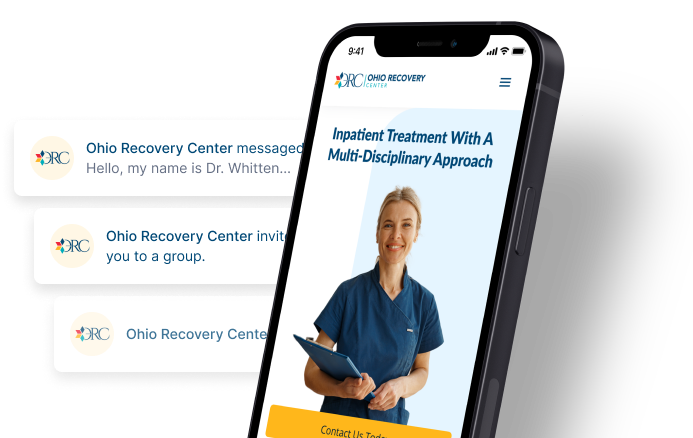Carfentanil Withdrawal | Symptoms, Timeline, & Detox

Medically Reviewed By: Manish Mishra, MBBS
Carfentanil is a very potent opioid that increases the risk of overdose death. Coming off carfentanil can lead to side effects and symptoms that are almost as strong as when you use the drug, and withdrawing from opioids may require the help of healthcare professionals.

When you develop opioid dependence and try to stop using, serious withdrawal symptoms can occur. Opioid withdrawal symptoms can make the recovery process difficult and increase the risk of relapse.
Carfentanil is a synthetic opioid drug that is approved as a tranquilizer for large animals like elephants. Unfortunately, humans have started abusing this powerful drug.
Carfentanil is 10,000 times more potent than morphine and 100 times more potent than fentanyl. This potency is very dangerous, and consuming any amount of this drug can lead to overdose and death. Some drug dealers even mix it into street drugs and people ingest it unknowingly.
Carfentanil works by binding to the opioid receptors in the central nervous system and increasing the amount of dopamine in the brain. This leads to a euphoric effect.
On top of that, the DEA and FDA classify the drug as a Schedule II controlled substance, which means it has both a high potential for abuse and can lead to dependency and carfentanil addiction.
In 2016-2017, Ohio reported the largest number of overdose deaths involved fentanyl analogs like carfentanil.
Carfentanil Withdrawal Symptoms
When your body becomes dependent on carfentanil or any opioid and you stop using it, withdrawal symptoms are likely to show up. How severe they are and how long they last depend on a number of factors, but common opioid withdrawal symptoms can include:
- nausea and vomiting
- diarrhea
- runny nose
- body aches
- sweating
- depression
- trouble sleeping
- increased anxiety
- agitation
- increased blood pressure
- fatigue
- low appetite
- chills
- watery eyes
- increased heart rate
- irritability
- cravings
- fever
How intense your withdrawal symptoms are depends on a variety of factors, including:
- type of drug carfentanil was mixed in with
- overall health
- the amount of carfentanil ingested
- history of mental health disorders
- age
- how long opioids have been used
- severity of opioid addiction
- metabolism
- dietary habits
- tapering schedule
Additionally, the above factors will likely play a role in how long withdrawal symptoms last.
Carfentanil Withdrawal Timeline
While no one person’s withdrawal timeline will be the same, there are some general guidelines you can look to if you want to know if your symptoms are common or not. A general carfentanil withdrawal timeline can look like other opioid drugs and include:
6-12 Hours After Last Dose
Withdrawal symptoms may start to show up as early as six hours after the last dose of an opioid. During this stage, withdrawal symptoms can include anxiety, restlessness, body aches, sweating, nausea, and watery eyes.
1-3 Days After Last Dose
Withdrawal symptoms tend to peak at this point and some of the symptoms you may feel include body aches, muscle spasms, shaking, diarrhea, depression, anxiety, and intense cravings for the drug. This is the point when relapse is most likely to occur.
4 Days – 2 Weeks
After the withdrawal symptoms have peaked, symptoms will likely ease in intensity but some will continue to stick around. Some of the common symptoms during this phase include depression, chills, fatigue, and cravings.
Up To 2 months
Most withdrawal symptoms will be gone but some can last for weeks to months after your last dose. Some of the symptoms that can stick around include anxiety, insomnia, depression, cravings, and apathy.
These long-lasting symptoms are often part of post-acute withdrawal syndrome (PAWS). When withdrawal symptoms last this long, professional help is likely necessary.
Carfentanil Detoxification
The best way to go through carfentanil withdrawal is in a medically supervised detox program at an inpatient treatment center. While there, doctors and nurses can provide medication to help ease withdrawal symptoms and cravings.
Going through medical detox with the help of medical professionals is recommended especially when detoxing from powerful opioids like carfentanil. Detoxing cold turkey can lead to serious withdrawal symptoms and potentially dangerous complications.
Opioid Addiction Treatment
After detox, the next step in addiction recovery is typically inpatient or outpatient treatment. In these types of treatment, you may participate in therapy, support groups, medication-assisted treatment with methadone or buprenorphine, and recreational activities.
If you or a loved one live with opiate/opioid addiction, Ohio Recovery Center is here to help. We offer a variety of drug addiction treatment programs including detox, inpatient drug rehab, medication-assisted treatment, and aftercare support.
For more information, please call our helpline today.
- Centers for Disease Control and Prevention (CDC) — Notes from the Field: Overdose Deaths with Carfentanil and Other Fentanyl Analogs Detected — 10 States, July 2016–June 2017 https://www.cdc.gov/mmwr/volumes/67/wr/mm6727a4.htm
- Department of Justice — Carfentanil: A Dangerous New Factor in the U.S. Opioid Crisis https://www.justice.gov/usao-edky/file/898991/download
- Drug Enforcement Administration (DEA) — DEA Issues Carfentanil Warning To Police And Public https://www.dea.gov/press-releases/2016/09/22/dea-issues-carfentanil-warning-police-and-public
- National Library of Medicine: PubChem — Carfentanil https://pubchem.ncbi.nlm.nih.gov/compound/Carfentanil

